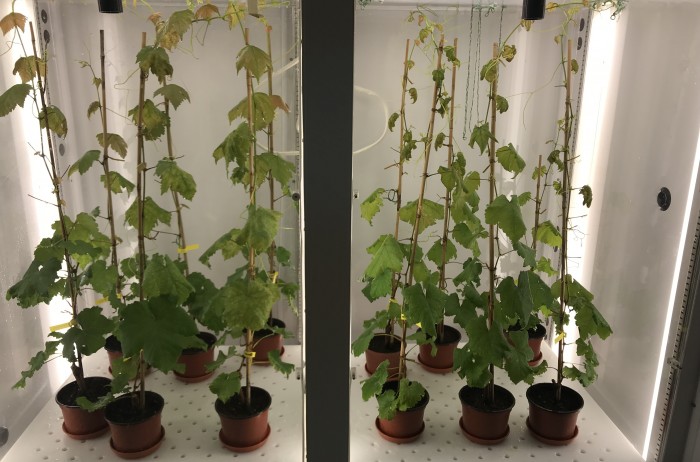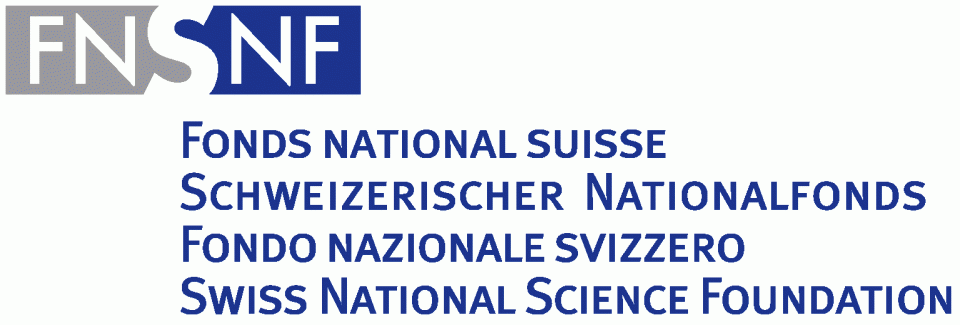
Volatile organic compounds from Essential Oils as a sustainable alternative to pesticides - deciphering the molecular basis underlying their mode of action as plant immunity primers
Downy mildews, caused by oomycetes of the family Peronosporaceae, are plant diseases that can cause tremendous economic losses in many important agricultural food crops worldwide and are responsible for huge amounts of synthetic pesticide applications. The grapevine (Vitis vinifera) is highly susceptible to downy mildew, caused by Plasmopara viticola, which represents the most devasting disease in viticulture. To foster a sustainable agriculture, guarantee producer and consumer health, ecological solutions to synthetic pesticides are thoroughly needed. Unter den potentesten natürlichen Pflanzenschutzmitteln, den Essential oils (EOs), haben sich ihre antifungalen Eigenschaften auf mehreren landwirtschaftlichen Kulturen gezeigt. Ihre Leistung hängt jedoch stark vom Anwendungszeitpunkt und der Anwendungsmethode ab. Eine direkte flüssige Anwendung hat sich als sehr kompliziert erwiesen aufgrund von Phytotoxizität, schlechter Haftung und der hydrophoben Natur von EOs, was zu einer schlechten Mischbarkeit mit Wasser und anderen Chemikalien führt. Furthermore, the molecular mechanisms that are triggered by EOs in host-plants and pathogens, which underlie their efficiency, remain poorly understood. The elucidation of the mode of action of EOs on pathogens and their role in plant immunity priming could promote the development of natural ecological plant protection products and aid to better understand plant immunity priming thereby providing fundamental information and new molecular targets for resistance breeding strategies and eventually genome editing. To address those questions, we conducted preliminary experiments, where we could, for the first time, demonstrate that the vapor phase of EO of Oregano vulgare applied in vivo on P. viticola infected grapevines can impede efficiently fungi development. In our study whole genome transcriptomic analysis indicated that the efficiency of EO vapor treatment is to a certain extent due to the priming of plant defense mechanisms inside the host plant. These very promising results highlight the great potential of EO vapor treatments against fungal pathogens and its potential role in plant defense priming. Our study rose several important questions regarding mode of action of EO on host and pathogens, which could not be addressed within the scope of the conducted experiments. The proposed project builds up on our previous findings and has as an overall aim to elucidate the potential of O.vulgare vapor and its different terpenic compounds as plant immunity primers and antifungal agents. The project will combine in vitro, in vivo and in situ experiments on grapevines infected with P.viticola and treated with different volatile constituents of EO vapor. Treatments and sampling will be carried out at different time points before, after and during the infection cycle to decipher precisely the molecular mode of action of EO volatiles on the plant and on the pathogen. RNA-sequencing for differential gene expression will be combined with targeted metabolomic analysis of primary (amino acids, organic acids, sugars) and secondary compounds related to plant immunity, such as phytoalexins (stilbenes, piceids, viniferins) and other phenylpropanoids. The analysis of major hormones such as Salicylic acid, Jasmonic acid, Ethylene, and Abscisic acid, which have been shown to play a role in plant defense mechanisms will help to characterize plant defense priming an to decipher complex hormonal crosstalk's and regulation pattern. A further objective of the project, embedded in the COST-action CA17111, is the integration of the different obtained omic data sets and the development, test and publication of new methods and best practices for the management, integration and analysis of large, heterogeneous data sets from biological experiments. The subsequent metanalysis of produced and existing data from different studies will improve the fundamental knowledge of plant-pathogen-treatment interactions. This will provide new molecular targets for resistance breeding programs and accelerate the development of natural plant protection products. The use inspired part of the project builds up on fundamental results and consists in the construction, installation and testing of a field vapor application system which will diminish disease infection and thereby help to reduce pesticide applications and promote an environmentally friendly agriculture.
2020 - in progress
Partner: Agrifood Research and Technology Centre (Zaragoza), Université de Bordeaux, INRA Bordeaux, Umeå University
Funding: Schweizerischer Nationalfonds


